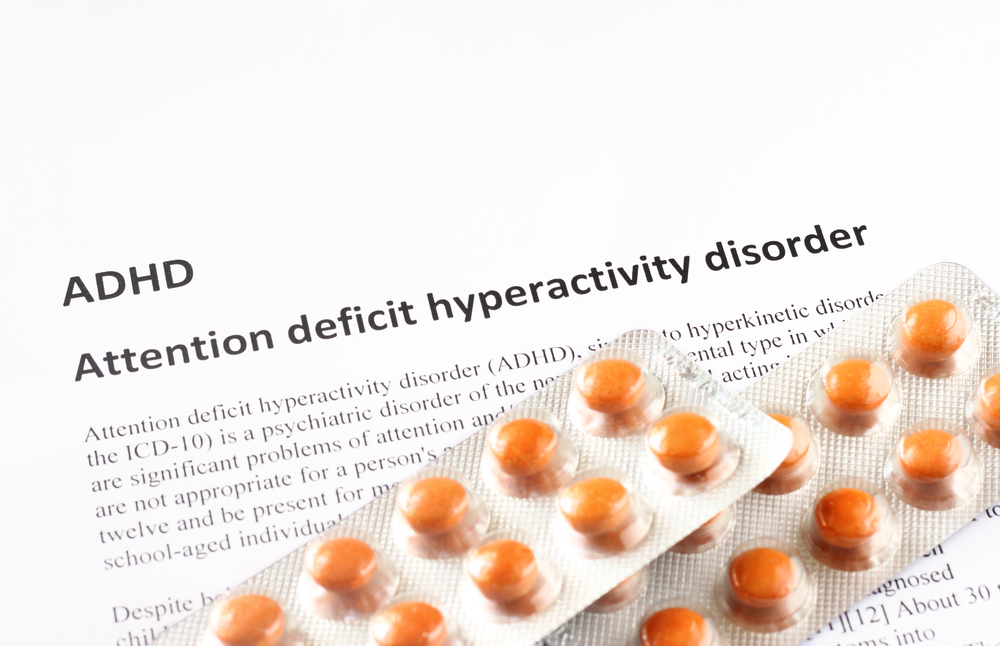
Attention deficit hyperactivity disorder (ADHD) is one of the most prevalent neurodevelopmental disorders. In the US, roughly every tenth child and adolescent is affected and more often than not, ADHD persists into adulthood (Kessler et al., 2006).
Controversy still surrounds the treatment of ADHD: Generally, medication with adjuvant psychological interventions such as cognitive-behavioural therapy is favoured. While the stimulant methylphenidate has been the pharmacological mainstay for years, in some cases, atomoxetine may be efficacious too (Garnock-Jones & Keating, 2009). As ADHD continues to be the cause of significant health and societal problems, however, improved treatment options are direly needed.
Recently, interest has been growing in tricyclic antidepressants (TCAs) as drugs to tackle ADHD, but a concise overview is still lacking. To this end, a recent Cochrane Review (Otasowie, Castells, Ehimare, & Smith, 2014) has taken a look at the evidence.
Methods
The authors screened several medical databases and trial registers for randomised controlled trials (RCTs) comparing any TCA with either placebo or active comparator (e.g. methylphenidate) in children or adolescents with ADHD. Patients with comorbidities, as is often the case in ADHD, were included as well. Standardised mean differences (SMD), Odds ratios (OR) and 95% confidence intervals (CI) were calculated to provide summary statistics.
Six RCTs with 216 patients were identified as satisfying inclusion criteria. Of those, five compared desipramine against placebo and one used nortriptyline. Among desipramine trials, one evaluated desipramine against clonidine (another ADHD drug) and placebo, while one trial compared desipramine and clomipramine (another TCA) with methylphenidate and placebo. Comorbidities included tic or Tourette disorder in one study, while another tested children with comorbid tic disorder only.
Overall methodological quality varied from low to very low.

Albert the systematic reviewer had that sinking feeling again. His methodologically robust review contained only poor quality trials.
Results
As a group, TCAs were significantly more effective than placebo regarding improvement of core ADHD symptoms (OR 18.50, 95% CI 6.29 to 54.39, 3 trials with 125 participants, low quality).
Looking at individual drugs, it was found that desipramine significantly improved core symptoms of ADHD (impulsivity, hyperactivity, inattention) in children and adolescents as rated by:
- Parents (SMD -1.42, 95% CI -1.99 to 0.85, 2 trials with 99 participants, low quality)
- Teachers (SMD -0.97, 95% CI -1.66 to -0.28, 2 trials with 89 participants, low quality)
- Clinicians (OR 26.41, 95% CI 7.41 to 94.18, 2 trials with 108 participants, low quality)
Compared to clonidine, desipramine was more efficacious in reducing parent-reported ADHD symptoms in a sample with comorbid tics or Tourette disorder (SMD -0.90, 95% CI -1.40 to -0.40, 1 trial with 68 participants, very low quality).
Nortriptyline was also efficacious, improving core symptoms according to clinicians (OR 7.88, 95% CI 1.10 to 56.12), although this was only supported by a single study.
Even though no serious adverse effects occurred, participants reported nausea, confusion, sedation, dry mouth and several other unpleasant experiences well known to be caused by TCAs. Also, mild increases in diastolic blood pressure and pulse were noted. Desipramine was associated with reduced appetite, while nortriptyline led to weight gain compared to placebo. However, treatment discontinuation was comparable among desipramine and placebo arms.

This well conducted systematic review found no reliable evidence to support the prescribing of tricyclic antidepressants for ADHD in children and young people.
Summary
The authors concluded that:
Findings suggest that, in the short term, desipramine improves the core symptoms of ADHD, but its effect on the cardiovascular system remains an important clinical concern. Thus, evidence supporting the clinical use of desipramine for the treatment of children with ADHD is low.
Limitations
Overall, the quality of the RCTs included in this review was low to very low, indicating a concerning risk of bias. In addition, with only six RCTs making up this heterogeneous group of participants and designs, it remains doubtful whether sound conclusions can be drawn at this stage. In three trials, the treatment duration of just three weeks was too short to evaluate TCA therapy.
Discussion
Clearly, there’s no silver bullet for treating ADHD in children and young people. This review by Otasowie and colleagues shows that TCAs are generally a pretty bad idea to give to anyone with ADHD. We also know that there are more efficient and better tolerated pharmacological interventions (Wolraich et al., 2011).
Besides drugs, the evidence shows that adjuvant psychotherapy may help to stabilise and improve the benefits of already approved and available medications (Sonuga-Barke et al., 2013).
From a patient perspective, it’s better knowledge about successful psychological treatments that is lacking, not recycling of yet another drug.

Young people with ADHD and their families would surely welcome more research about the benefits of non-pharmacological treatments.
Links
Otasowie J, Castells X, Ehimare UP, Smith CH. Tricyclic antidepressants for attention deficit hyperactivity disorder (ADHD) in children and adolescents. Cochrane Database of Systematic Reviews 2014, Issue 9. Art. No.: CD006997. DOI: 10.1002/14651858.CD006997.pub2.
Garnock-Jones KP, Keating GM. (2009). Atomoxetine: a review of its use in attention-deficit hyperactivity disorder in children and adolescents. Paediatric Drugs, 11(3), 203–26. doi:10.2165/00148581-200911030-00005 [PubMed abstract]
Gellad WF, Stein BD, Ruder T, Henderson R, Frazee SG, Mehrotra A, Donohue JM. (2014). Geographic Variation in Receipt of Psychotherapy in Children Receiving Attention-Deficit/Hyperactivity Disorder Medications. JAMA Pediatrics. doi:10.1001/jamapediatrics.2014.1647 [Abstract]
Kessler RC, Adler L, Barkley R, Biederman J, Conners CK, Demler O, Zaslavsky AM. (2006). The prevalence and correlates of adult ADHD in the United States: results from the National Comorbidity Survey Replication (PDF). The American Journal of Psychiatry, 163(4), 716–23. doi:10.1176/appi.ajp.163.4.716
Sonuga-Barke, E. J. S., Brandeis, D., Cortese, S., Daley, D., Ferrin, M., Holtmann, M., … Sergeant, J. (2013). Nonpharmacological interventions for ADHD: systematic review and meta-analyses of randomized controlled trials of dietary and psychological treatments. The American Journal of Psychiatry, 170(3), 275–89. doi:10.1176/appi.ajp.2012.12070991 [PubMed abstract]
Wolraich, M., Brown, L., Brown, R. T., DuPaul, G., Earls, M., Feldman, H. M., … Visser, S. (2011). ADHD: clinical practice guideline for the diagnosis, evaluation, and treatment of attention-deficit/hyperactivity disorder in children and adolescents (PDF). Pediatrics, 128(5), 1007–22. doi:10.1542/peds.2011-2654


Tricyclic antidepressants for ADHD in children and adolescents: Cochrane review finds no evidence to support p… http://t.co/t3asknKguY
RT @Mental_Elf: Tricyclic antidepressants for ADHD in children & adolescents http://t.co/Ycj4rVahTi
The Mental Elf liked this on Facebook.
“@Mental_Elf http://t.co/HBDz6stGKp” ‘no silver bullet’ indeed! Children deserve a range of methodologies and insightful practitioners
@colettebonar @Mental_Elf And way too many practitioners are useless, ignorant, oh did I say useless?
@betsdavenport @colettebonar @Mental_Elf tell us what you’re looking for in your clinicians
Today we blog about a recent @cochranecollab review on tricyclic antidepressants for ADHD in children & adolescents http://t.co/S3C4V0o1UQ
@Mental_Elf @cochranecollab ADD studies hard to judge because so much overdiagnosis/overtreatment. Antidepressants bad idea.
@AllenFrancesMD @Mental_Elf @cochranecollab That’s BS. In fact, it’s under diagnosed and usually under treated.
@AllenFrancesMD @Mental_Elf @cochranecollab Guinea pigs and cash cows for big pharma
June Dunnett liked this on Facebook.
@Mental_Elf That is a bad idea.
Louise Arscott liked this on Facebook.
Antidepressants for ADHD @youngmindsuk @MindEdUK @ncbtweets @CHADD_ADHD Interested in your thoughts on new SR http://t.co/S3C4V0o1UQ
@Mental_Elf are friends at @RCPCHtweets @rcpsych @PaedMHAssoc @BPSOfficial will no doubt find this interesting http://t.co/VFAsFOwKjj
“Tricyclic antidepressants for ADHD in children and adolescents: Cochrane review finds no evidence” http://t.co/12k1F6j5ko
‘Sue Mario liked this on Facebook.
RT @Mental_Elf: New #CochraneEvidence finds no support for prescribing antidepressants to children with ADHD http://t.co/S3C4V0o1UQ
better knowledge about successful psychological treatments is lacking, not recycling of another drug http://t.co/AgnP1rbnNQ #cypmentalhealth
#Tricyclic antidepressants for #ADHD in children and adolescents – The Mental Elf http://t.co/JOl6Ekwf76
Tricyclic antidepressants for ADHD in children and adolescents http://t.co/C7GDDc9YUN
RT @Mental_Elf: Antidepressants for ADHD @YoungMindsUK @MindEdUK @ncbtweets @CHADD_ADHD Interested in your thoughts http://t.co/G6JDfztpms
Mental Elf: Tricyclic antidepressants for ADHD in children and adolescents: Cochrane review finds no evidence to… http://t.co/L2Sppj2PWJ
Hampshire Healthcare Library Service liked this on Facebook.
RT @Mental_Elf: Young people with ADHD & their families would surely welcome more research about the benefits of non-drug treatments http:/…
Tricyclic antidepressants ADHD in children and adolescents: Cochrane review finds no evidence to support prescribing http://t.co/WFnSKQYTjp
Don’t miss: Tricyclic antidepressants for ADHD in children & adolescents http://t.co/S3C4V0o1UQ
@PUNC14 RT @Mental_Elf: New #CochraneEvidence finds no support for prescribing antidepressants to children with ADHD http://t.co/RQ8L6C1WQU“
Tricyclic antidepressants for ADHD in children and adolescents http://t.co/8EC4ogXNDd From @mental_elf
Carina Kirby liked this on Facebook.